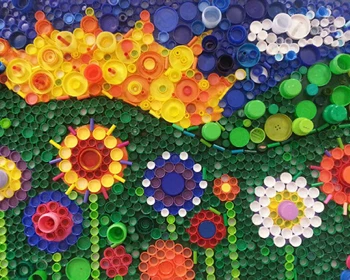The recycling landscape can sometimes be a labyrinth to navigate. Understanding what can and cannot be recycled is crucial to ensure we are contributing effectively to environmental sustainability. This is particularly true when it comes to plastics, a category of waste that significantly contributes to landfill overflows and pollution. So, let’s take a moment to be clear about recycling plastics.
In general, food, beverage, personal care, or household plastic containers are widely accepted for recycling. These everyday items make up a large chunk of our consumer waste, and thankfully, they can be efficiently recycled into new products. This includes items like shampoo bottles, soda bottles, butter tubs, and more.
However, not all plastics are created equal. Certain types, due to their composition and the recycling technology available, are not currently recyclable. One common type of plastic that falls into this category is black microwaveable trays. The color of these trays prevents them from being correctly sorted at recycling facilities, as black plastic doesn’t reflect light and can’t be identified by the optical sorting machines. Hence, even though they’re plastic, they can’t be recycled using conventional methods.
Similarly, Styrofoam, or expanded polystyrene, is another material that is generally not accepted in curbside recycling programs. Although it’s technically recyclable, its lightweight nature and low scrap value make Styrofoam recycling economically challenging. It’s also often contaminated with food or drink, which further complicates recycling.
Plastic bags, while often recyclable separately, also present a challenge to most curbside recycling programs. Their thin and flexible structure can clog up the machinery at recycling plants, causing significant delays and potentially damaging the equipment. Therefore, they are typically collected separately, often at grocery stores or other retail locations that offer dedicated plastic bag recycling.
In contrast to the materials mentioned above, there’s some good news for milk and juice cartons, as well as juice boxes. These items, also known as gable-top cartons and aseptic containers, are indeed recyclable! Despite their multi-layered construction—typically a mix of paper, plastic, and sometimes aluminum—they can be pulped and separated into their individual components for recycling.
Overall, while the world of plastic recycling may seem complex, it’s crucial to get it right. Taking the time to understand which plastics can be recycled ensures we’re doing our part to minimize landfill waste and reduce demand for new plastics. So let’s continue to educate ourselves, ask questions, and recycle right. Every bit of effort helps our planet breathe a little easier.


